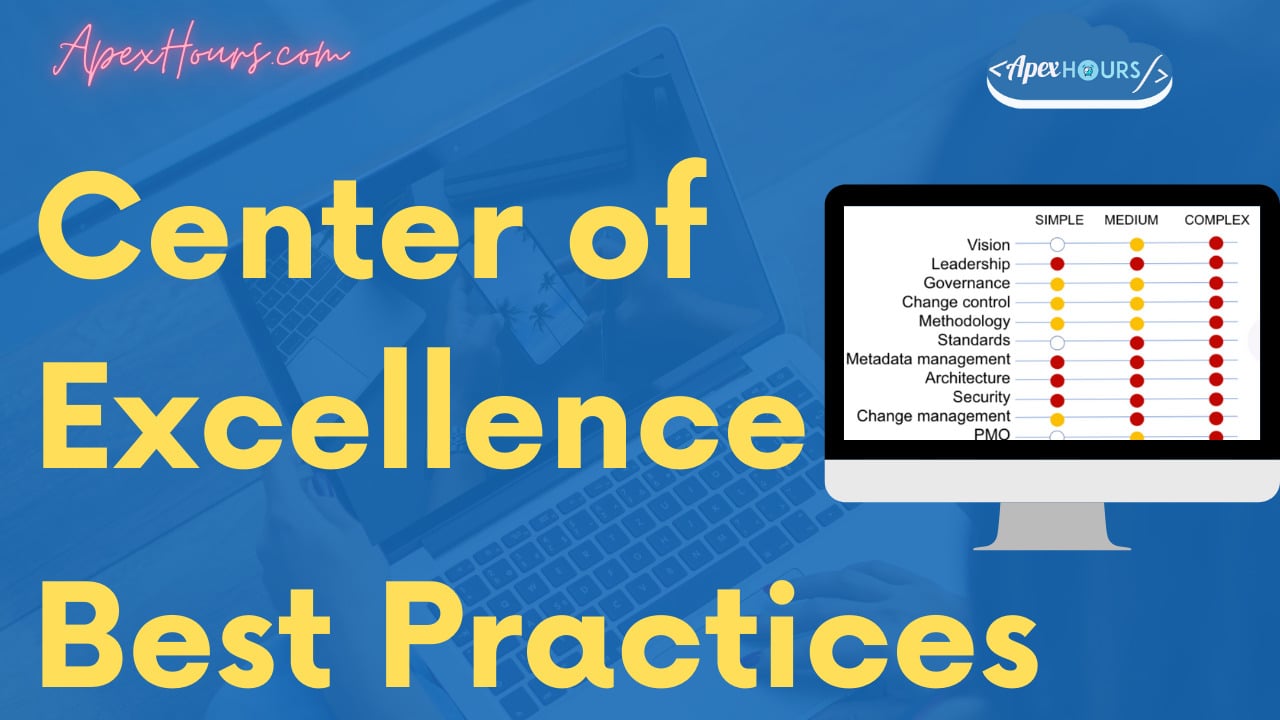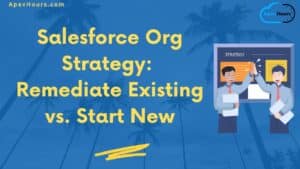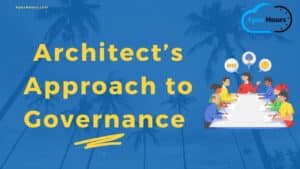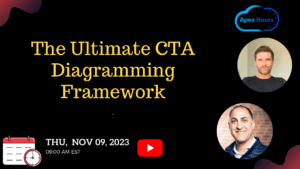What is a Center of Excellence and why now. As Salesforce becomes more strategic with a braders scope in organization it needs more effective management. A Center of Excellence puts in place the different management pillars required to drive a significantly greater ROI from Salesforce. Let see Salesforce Center of Excellence Best Practices.
I host Center of Excellence round table discussions with Salesforce leaders and they are massively popular events attended by CIOs, platform owners, architects and consultants.
There are 13 pillars to a COE, but the good news is that when you are establishing a COE they do not all need to be in place from day 1. They are also not unique to Salesforce. Historically, all successful system implementations have a COE; for example; Oracle, SAP. That means the principles are well understood, but they have evolved to reflect the low-code power of Salesforce. What has not changed is the importance of putting a COE in place. A study by 10k Advisors found that the 91% of Salesforce implementations that they surveyed with the highest ROI had a COE.
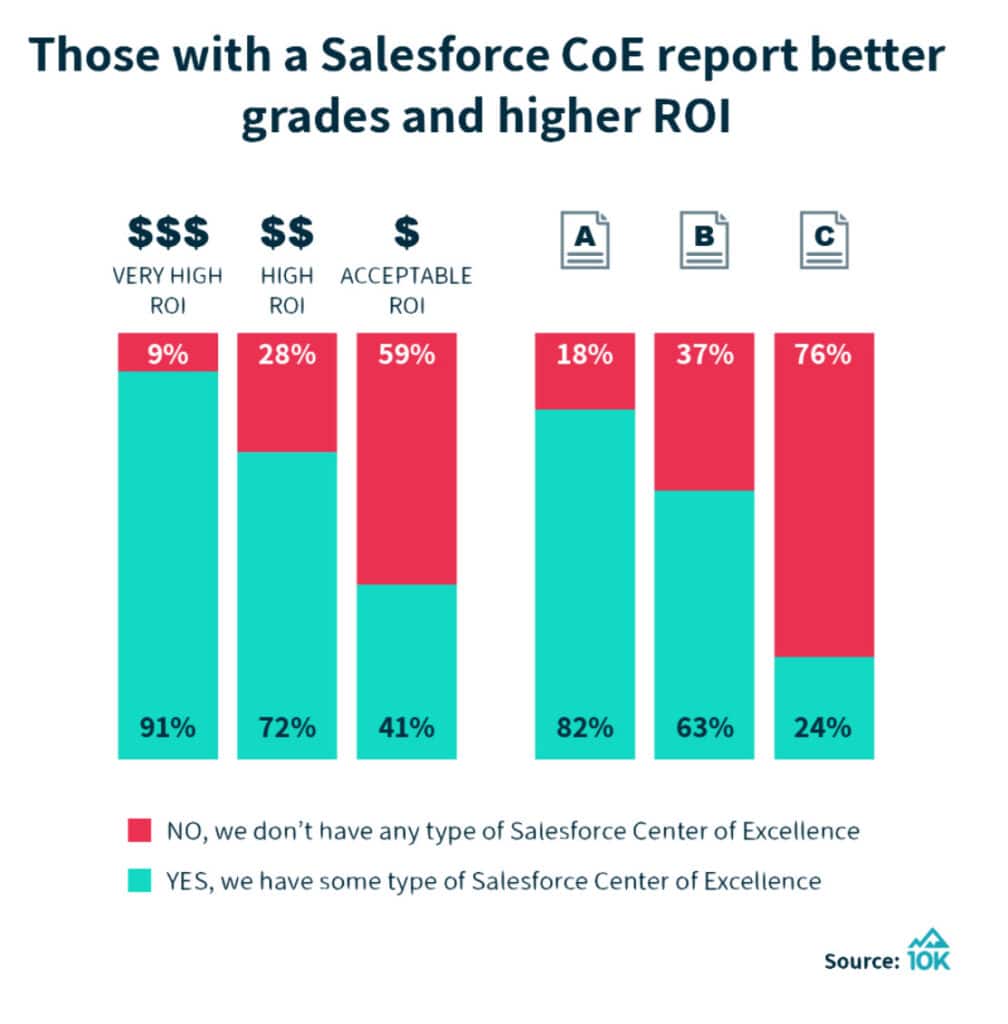
13 Center of Excellence Best Practices
Establishing a COE is phased, based on the strategic importance or complexity of the implementation. It is not just about the number of users. A relatively small number of users in a highly regulated environment where Salesforce is integrated with back office systems is complex. Whilst a standalone SFA (sales force automation) implementation for 1,000s of users is simple. A complex implementation will need to have all the pillars in place, whilst a simple one will only need a handful.
Our view of what needs to be in place for simple, medium and complex is described in the table after the description of the different pillars.
- Vision: strategic vision and direction for Salesforce for both the business and IT
- Leadership: Steering Committee and key sponsors in business and IT
- Governance: overall control of strategic direction, business cases, investment and risk management
- Change control: management of changes to all aspects of the project
- Methodology: the implementation methodology covering people, process and technology which includes business analysis, DevOps and adoption.
- Standards: includes standards for business analysis, org documentation, metadata naming, coding, testing, communication, change management and training
- Metadata management: documentation and control of the Salesforce metadata across the deployment pipeline
- Architecture: technical architecture of Salesforce and how it relates to the integrated systems and InfoSec
- Security; coding and external integrations introduces vulnerabilities that need to considered from the outset
- Change management: communications, organizational change and training to get Salesforce adopted
- PMO: the Project Management Office that manages the COE activities
- Tooling: platforms/apps/ tools used to support the project
- Prototyping: innovation hub that builds out Salesforce prototypes to show the “art of the possible”
Where to get started?
Even the least complex Salesforce implementations need to have the basis of a COE in place. Without these basics in place the implementation is unlikely to deliver the promised results. It all starts with getting leadership on board.
Leadership
Without support from either the business sponsor or IT is difficult to create a product roadmap and agree development priorities. Start with the “platform owner”. That is whoever is signing off the budget for the Salesforce licenses. Then work out who the business owner is and set up a regular meeting with them and the platform owner.

The first meeting should be to establish the objectives or goals of Salesforce. That will set the scope and help you understand the needs of the business users.
Architecture and Security
Both these are very difficult and expensive to change if they are not considered at the outset. There are strong parallels with architecting buildings. If you start building a single level house, and later decide to make it a 4 floor condo, the retro-fitting stairs, fire escapes and elevators is really hard.The question is often, “Is it easier to tear it down and start again?” This is also a phrase we often hear around older Salesforce Orgs.
So architecture to be in the earliest design discussions and needs to consider the data structure, integrations, scaling and performance at a minimum.
Salesforce is doubling down on architecture training and certification. At Dreamforce Parker Harris, co-founder of Salesforce, announced that the architecture team would report directly to him which is such a powerful message, It means that the training, certifications, evangelism will get the focus and investment that they need.
Twinned with architecture is security. Whilst Salesforce is secure, every integration, every external call, and every user login is a potential security risk. Security is far easier to design in, rather than discover vulnerabilities in production and have to try and secure them.
Metadata management
The game changing power of Salesforce is the speed of declarative development. It enables changes to be made at a pace that does not slow the agility of business. But without an approach to documenting the changes and understanding the impact of future changes, technical debt increases and that agility slows.
Metadata management means tracking and documenting the history of changes. It means building a picture of where used for metadata so the impact of any change is understood. At the heart of this is a metadata dictionary. The scale and speed of change of Salesforce means that this cannot be done manually.
The good news is that Change Intelligence Platforms – like Elements.cloud – leverage the Salesforce APIs to provide automated metadata documentation and impact analysis. Change Intelligence Platforms also provide the business analysis capability required to ensure that the right functionality is being developed; capturing feedback and requirements, mapping business processes, and developing user stories. A Change Intelligence Platform combined with a DevOps platform is the tooling that powers a Center of Excellence. DevOps provides support for development, testing, release and backup.
How Center of Excellence impacts your career
We’ve seen that as the Salesforce implementation becomes more strategic as Center of Excellence is required. What is also clear is that Salesforce is rapidly becoming the core application for customer data in organization after organization. It makes sense to expand the scope into the back office through customization, managed packages or integration with other applications. The implication is that even if your org currently has a narrow scope, there are probably plans to expand its reach and capabilities. It is only a matter of time until a Center of Excellence goes from an idea to a necessity.
From a career perspective, you want Salesforce to take on more strategic significance. It increases the value of your role, your importance and hopefully your salary. It certainly means that you will get more investment to do what you love most; Salesforce.
Therefore, understanding the principles or pillars of a COE will put you in a far better position when investment and project staffing decisions are made.
Learning more
- Center of Excellence White Paper; a deep dive in the principles behind a Center of Excellence. Check here.
- Center of Excellence round tables; discussions with COE leaders and consultants on a broad range of topics. But recurring themes are how to establish a COE, how to build a business case, and who is the owner. Check here.
- Center of Excellence insights; 2-3 min insights from Center Excellence round tables. Check here.
- Change Intelligence Platform; the software platform that powers a Center of Excellence. Check here.

